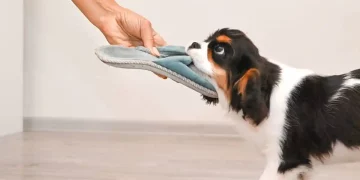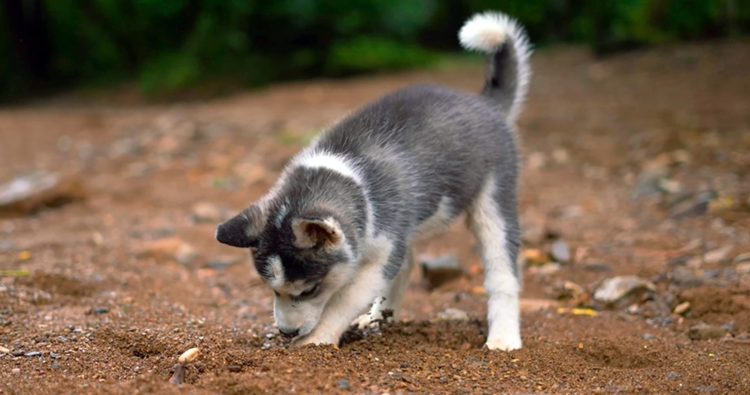Pets bring immense joy and companionship into our lives, but they also come with challenges, particularly when it comes to destructive behaviors. From chewing on furniture to scratching at doors, these actions can cause frustration for pet owners. Understanding the root causes of these behaviors and implementing effective solutions can help you foster a harmonious relationship with your pet. In this guide, we will explore common destructive pet behaviors—chewing, scratching, digging, and more—and offer practical strategies to stop them, ensuring your pet stays happy and your home remains intact.
1. Understanding Destructive Behaviors in Pets
Destructive behaviors in pets, such as chewing, scratching, or digging, are often signals of unmet needs or a lack of proper training. It’s important to understand that these actions are rarely a sign of malice but rather expressions of boredom, anxiety, or an instinctive need to explore. Before addressing these behaviors, consider the following:
1.1. Boredom
Pets, particularly dogs, need mental and physical stimulation. Without enough exercise or activities, they may resort to destructive behaviors to release excess energy. Cats, too, can become bored and engage in undesirable behaviors if they lack stimulating environments.
1.2. Separation Anxiety
Pets that experience separation anxiety may act out when left alone, resulting in behaviors like chewing, scratching, or inappropriate urination. They associate being left alone with stress and try to cope by engaging in destructive activities.
1.3. Teething
For puppies and kittens, chewing is a natural phase in their development. Teething can be uncomfortable, and chewing on objects helps alleviate the discomfort. However, this can quickly become destructive if they target furniture or personal belongings.
1.4. Hunting Instincts and Exploration
Some pets, particularly cats and certain dog breeds, may engage in digging or scratching as part of their natural instincts. For dogs, digging can be a way of finding shelter or exploring. Cats often scratch to mark territory or stretch their muscles.
2. Addressing Destructive Chewing in Dogs
Chewing is one of the most common destructive behaviors in dogs. While it’s a natural behavior, it can become problematic when your dog targets household items. Here’s how you can address chewing:
2.1. Provide Appropriate Chew Toys
Ensure your dog has a variety of safe and engaging chew toys. Toys that are designed for dental health, such as rubber bones or chew ropes, can help satisfy their urge to chew without damaging your furniture.
Tip:
Introduce different textures and flavors in chew toys to keep your dog interested and engaged. Rotate toys regularly to prevent boredom.
2.2. Exercise and Mental Stimulation
A well-exercised dog is less likely to engage in destructive behaviors. Regular walks, playtime, and mentally stimulating activities like puzzle toys can help tire out your dog and reduce the urge to chew out of boredom or excess energy.
2.3. Redirect Attention
If you catch your dog chewing on something inappropriate, immediately redirect their attention to a chew toy or another positive behavior. Be sure to praise and reward your dog when they choose the right item to chew.
2.4. Training ‘Leave It’ Command
Teaching your dog the “leave it” command is an essential part of preventing destructive chewing. This command will allow you to stop your dog from chewing on non-toy items when they start.
2.5. Deterring Chewing
Consider using safe chew deterrents, such as sprays designed to make furniture and other items unappealing to your dog. However, use these products sparingly and ensure they are safe for pets.

3. Preventing Scratching in Cats
Scratching is a natural and necessary behavior for cats, as it helps them mark territory, stretch muscles, and keep their claws sharp. However, if your cat’s scratching becomes destructive, it can be frustrating. Here’s how to manage it:
3.1. Provide Scratching Posts
The most effective way to stop your cat from scratching furniture is to provide alternative scratching surfaces, such as scratching posts, pads, or cat trees. Place these near the areas your cat likes to scratch to encourage them to use them instead.
Tip:
Ensure the scratching post is sturdy and tall enough to allow your cat to stretch fully. You may need to experiment with different textures (carpet, sisal, cardboard) to find what your cat prefers.
3.2. Use Cat Furniture
Cat trees or climbing shelves not only give your cat an appropriate space to scratch but also provide them with mental stimulation and an outlet for their natural climbing instincts. Vertical spaces help satisfy your cat’s need to scratch, jump, and perch.
3.3. Nail Trimming and Soft Paws
Regularly trimming your cat’s nails can minimize the damage caused by scratching. You can also use products like Soft Paws, which are soft caps that cover your cat’s claws and reduce scratching damage.
3.4. Positive Reinforcement
Reward your cat with treats or affection when they use the scratching post instead of furniture. This will help reinforce the desired behavior.
3.5. Deterring Scratching
If necessary, you can use safe, pet-friendly deterrents like double-sided tape or sprays on your furniture to make it less appealing for your cat to scratch.
4. Stopping Digging in Dogs
Digging is a behavior that is often associated with dogs’ natural instincts, but it can also be a sign of stress, anxiety, or lack of exercise. Here’s how to manage and prevent digging:
4.1. Provide Adequate Exercise
Dogs that dig often do so to release pent-up energy. Make sure your dog gets plenty of exercise, both physical and mental. Take them on walks, play fetch, or provide engaging toys that keep their mind occupied.
4.2. Create a Digging Zone
If your dog enjoys digging, try creating a designated digging area, such as a sandbox. Encourage your dog to dig in this area by burying toys or treats.
4.3. Address Anxiety
Digging can also be a sign of anxiety or fear, especially when left alone. Gradually increase your dog’s alone time to help them get used to being by themselves without feeling stressed.
4.4. Prevent Access to Digging Areas
If your dog digs in the yard or garden, limit their access to those areas until the behavior is addressed. You can also try using a physical barrier or training to stop the digging habit.
5. Dealing with Inappropriate Urination or Defecation
Inappropriate urination or defecation can also be considered destructive behavior. Pets may engage in this behavior due to medical issues, anxiety, or territorial marking. Here’s how to address it:
5.1. Establish a Consistent Routine
Establish a consistent bathroom schedule to prevent accidents. Regular potty breaks for dogs and litter box maintenance for cats can help reduce incidents.
5.2. Monitor for Health Issues
Urinary or bowel issues may be a sign of health problems, such as urinary tract infections or gastrointestinal distress. Consult with your vet if you notice any sudden changes in your pet’s bathroom habits.
5.3. Reduce Anxiety
Separation anxiety and stress can lead to inappropriate urination or defecation. Provide your pet with a calm and secure environment, and use pheromone diffusers or anxiety-reducing products to help alleviate stress.
5.4. Positive Reinforcement
Reward your pet when they use the bathroom in the appropriate place. For dogs, offer praise and treats after they relieve themselves outside. For cats, make sure the litter box is clean and in a quiet, accessible area.
6. Training and Consistency Are Key
One of the most important strategies for curbing destructive behaviors is consistent training. Whether your pet is chewing, scratching, digging, or exhibiting other undesirable behaviors, using positive reinforcement and redirecting their energy into more appropriate actions will lead to long-term success. Remember, patience is essential as these behaviors often take time to correct.
6.1. Professional Help
If you’re struggling to manage destructive behaviors despite your best efforts, consider seeking professional help. A certified dog trainer or animal behaviorist can provide personalized guidance tailored to your pet’s specific needs.
7. Conclusion: A Happy, Well-Behaved Pet
Destructive behaviors in pets are often a cry for attention, exercise, or proper mental stimulation. By addressing the underlying causes of these behaviors and providing appropriate outlets for energy and instincts, you can help your pet become more well-behaved and content. Remember, consistent training, positive reinforcement, and patience are essential to success. When your pet is happy and well-adjusted, their behavior will follow suit, and you’ll both enjoy a harmonious and loving relationship.























































